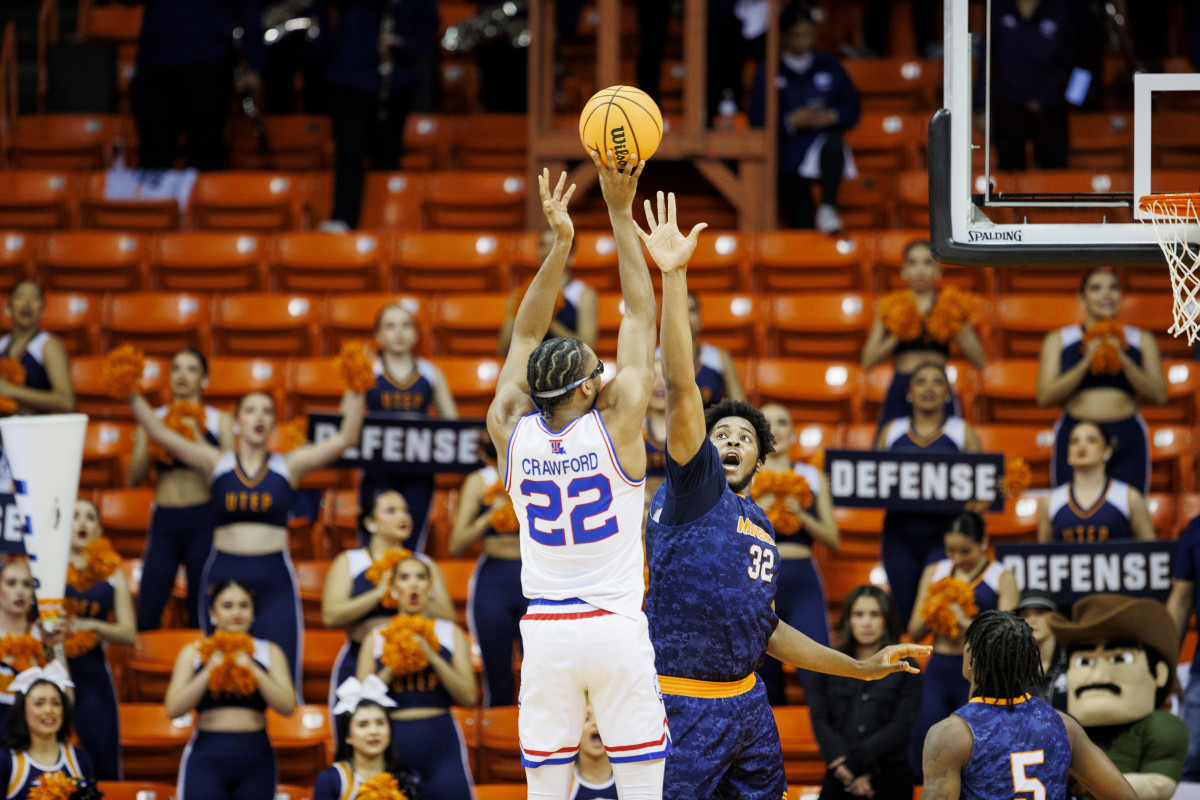Can Louisiana Tech's Isaiah Crawford Stick in the NBA?


Isaiah Crawford is a graduate of North Crowley High School, a Fort Worth native, and another top-notch player from the Dallas-Fort Worth Metroplex who has exploded onto the college basketball scene in the last few years.
He was not highly recruited coming out of high school, and according to recruiting sites, had just one Division I offer: Louisiana Tech.
Since joining the Bulldogs in 2019, Crawford has been a premier player in the C-USA, earning all-conference honors twice already with a third on the way for the 2023-24 season.
Strengths
Crawford is a smooth athlete with good defensive skills, a forward that, while not elite with his handle, can put the ball on the deck and attack closeouts.
He's demonstrated a burgeoning Euro-step throughout games this year as well, occasionally taking advantage of the opposing defense by either putting up a shot or dumping off to the post. He can put defenders in difficult positions due to his size and ability to move with the ball.
While not elite at any one thing on offense, Crawford is still an efficient scorer. According to Synergy Sports, he ranks in the 69th percentile in points per shot at 1.08, considered "Very Good" by the statistics service.
His biggest strength, however, is not necessarily his offense, despite it being solid for college – he's a good defender, a lockdown guy at his best, possessing a massive 7-foot wingspan that help him to contest shots on the perimeter.
When combined with the frame, Crawford just looks the part of a prototypical NBA small forward, and due to his build, he's not a player you can back down easily in the post.
Scalable Defense
There are however some legitimate concerns with Crawford on whether or not he has scalable traits – many of the things he is able to do in college may be neutralized by better athletes at the next level.
For example, when backpedaling on defense, he has decent flexibility as far as turning the hips goes, able to mostly stay in front of opposing ball handlers. The problem is that upon being switched onto a smaller, quicker guard, Crawford will have trouble staying with him.
It doesn't have to be a De'Aaron Fox, Ja Morant, or Donovan Mitchell, either – the chasm between the relative speed of the average C-USA primary ball handler and one in the NBA is obviously massive. It will be a big adjustment to make for him should he find himself on the floor in a reserve situation next season.
Role Fit
A lot of Crawford's game is based on scoring inside, and while he's got great size for a perimeter player, he will be smaller than many post players when he finds himself in the paint with the ball.
Essentially, he has a bit of a "tweener" skillset – he's got elements of being a wing and elements of being a forward. If he's to play in the Association, he could play an undersized four role in a small-ball lineup. Other than that particular situation, though, he may struggle to find a spot.
The other thing that sticks out is the passivity he can sometimes display on the offensive end. He will occasionally disappear in a game; he's very rarely outright bad, but he will be nonexistent for stretches.
He does some ball-watching, allowing his teammates to dribble around without always intervening to help.
Sometimes he impacts these possessions by setting screens; other times, he doesn't move around much at all, which can be frustrating.
Age
The final flaw that needs to be discussed is his age.
Crawford is a fifth-year senior at Louisiana Tech, making him 23 years old entering the 2024 NBA Draft. That is not the ideal age for a prospect that will require some molding by coaches, and likely a lengthy stint in the G League.
Crawford is a player who could earn a two-way contract upon entering the NBA, but beyond that, it's difficult to forecast his ceiling as a pro due to his lack of shooting prowess, at least on volume. He hits about 1.2 threes per game per 3.1 attempts, which can be helpful for stretching the floor – but to call him a floor spacer would be disingenuous.
There is a world in which he's selected in the late second-round; there is also a (more likely) world where he is an undrafted free agent who will have to fight for a spot on a roster.
The age, size, lack of role, occasional passivity, and questionable shooting stand in the way of his NBA career, but players have overcome bigger obstacles on their way to professional basketball.
Want to join the discussion? Like Draft Digest on Facebook and follow us on Twitter to stay up to date on all the latest NBA Draft news. You can also meet the team behind the coverage.
